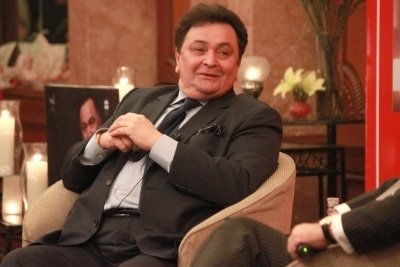He was always fated to be a star. Born in Bollywoods first family long before the industry was overrun by nepotism debates, Rishi Kapoor announced his arrival with a National Award as Best Child Artiste for his role in the 1970 gem, “Mera Naam Joker”. Three years later when his father, showman Raj Kapoor, launched him as a hero in teenybopper romance “Bobby”, he was the hottest young star in town. The chocolatebox hero was born.
For nearly three decades after that Rishi Kapoor was synonymous with romance, becoming Bollywood’s face of mush as no other actor has managed to be. From the naive romantic of “Bobby” to the loverboy prankster of “Rafoo Chakkar” and “Khel Khel Mein”, from being cast in the more classic backdrop of Bollywood romance in “Kabhi Kabhie” or “Laila Majnu”, to the unconventional lover with grey shades in “Zehreela Insaan”, it didn’t take him long to establish himself as the king of masala mush.
In all this, he discovered the power of song and dance to prop the endearing glamour as a romantic hero in that early phase. Rishi Kapoor emerged as a super dancer in the songs of “Hum Kissise Kum Nahin”, “Yeh Vaada Raha”, “Sargam”, “Dhan Daulat” “Zamaane Ko Dikhana Hai” and “Karz”.
The romantic-musical star tag was important for Rishi, because he was out carving a niche in an era that primarily belonged to the Angry Young Man. Sure he did get on with the occasional guntotting antic or some good old-fashioned filmi dishoom-punch, but that wasn’t his image. The audience went in to watch him romance, and dance.
Yet, Rishi was quietly reorganising his image with his roles — at least as much as the restrictive commercial Hindi cinema of the seventies and the eighties would let him. He carved a unique comic style for himself (“Rafoo Chakkar”, “Amar Akbar”Anthony”) that was, quite unlike what worked back then, without over-the-top tendencies.
By the turn of the decade and into the eighties, it was abundantly clear that Rishi Kapoor would not fade away — unlike most other chocolatebox heroes. As much as he loved romancing and dancing, he also realised the market for such heroes was shrunken at that point of time. He quickly latched on to the multustarrer bandwagon — the new in-thing for the Bollywood big screen.
Therein lies the secret of Rishi Kapoor’s survival and success. Above all else through the decades, he has been a master of reinvention. It is the sort of strategy that underlines abundant versatility, not just on screen but off it, too. On screen, because matching up to action heroes such as Amitabh Bachchan, Dharmedra or Vinod Khanna in scripts primarily written for the machomen demanded lots of screen presence. Kapoor came up trumps every time, despite never losing his essential characteristic as a loverboy in films such as “Naseeb”, “Coolie” or “Katilon Ke Kaatil”.
Yet the multistarrer phase would pass, and by the late eighties it would be time for Rishi Kapoor to reinvent again.
There was a rough phase around this time. As the eighties were drawing to a close, a whole new generation of stars and directors moving in. An aging romantic hero doesn’t find many takers in a fickle world as Bollywood. Rishi did what few expected him to — he started signing up heroine-oriented projects in the later eighties through the early nineties, opposite top actresses of the era such as Sridevi (“Nagina”, “Chandni”), Rekha (“Sheshnag”,”Azad Desh Ke Gulam”), Madhuri Dixit (“Yaarana”), and Juhi Chawla (Daraar”).
Qualitatively, Bollywood had hit an unprecedented low in this era, and the sole criterion of success seemed to be visibility. These films, as well as the multistarrers that he continued doing, helped him stay in the limelight. Very few of his solo hero projects back then made any impact.
By the 2000s, having made a move into supporting role, Kapoor had taken to playing the daddy roles in films like “Yeh Hai Jalwa” and “Kuch Khatti Kuch Meethi”. An era in Bollywood had changed with the millennium, medium of infotainment was changing and, just when people started saying that playing the heroine’s dad was the first sign of an actor’s end, Rishi Kapoor sprung his most glorious twin surprises.
First, he reorganised his image. With the advent of the 2010s, Kapoor moved away from all things nice that had ever defined his image. As the sinister face of evil in “Agneepath” and “D-Day”, he was suddenly reinventing villainy, in the same way he had redefined the hero all those years ago, arriving as the teen sensation in “Bobby”.
But more interesting was Kapoor’s reinvention off screen. He took to social media. When he joined Twitter in January of 2010, people expected just another wise old Bollywood star, who would spew niceties and knowledge. What they got was a firebrand who would take on any and everybody. Rishi Kapoor, always known to have spoken his mind, found a natural space to let off some steam. Sure, it got him trolled often, but it also did leave social media impressed with his guts.
That streak of guts defines everything he has ever lived for. It is something that resonates in his autobiography “Khullam Khulla” — published in 2017. It is the guts that let the moviestar embrace career changes as smoothly as his mind and spirit took on the fight against cancer head-on.
–IANS
vnc/vnc
